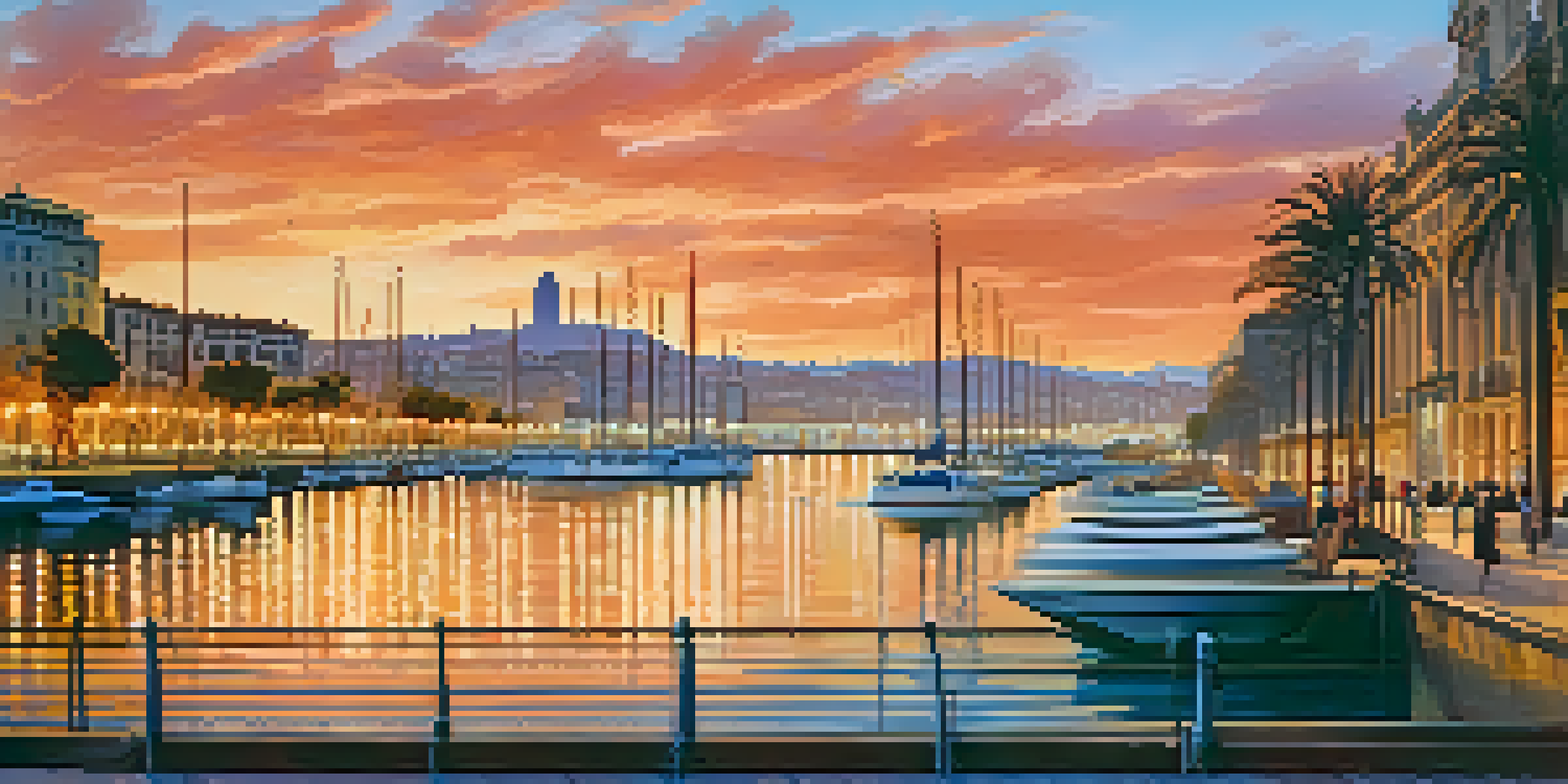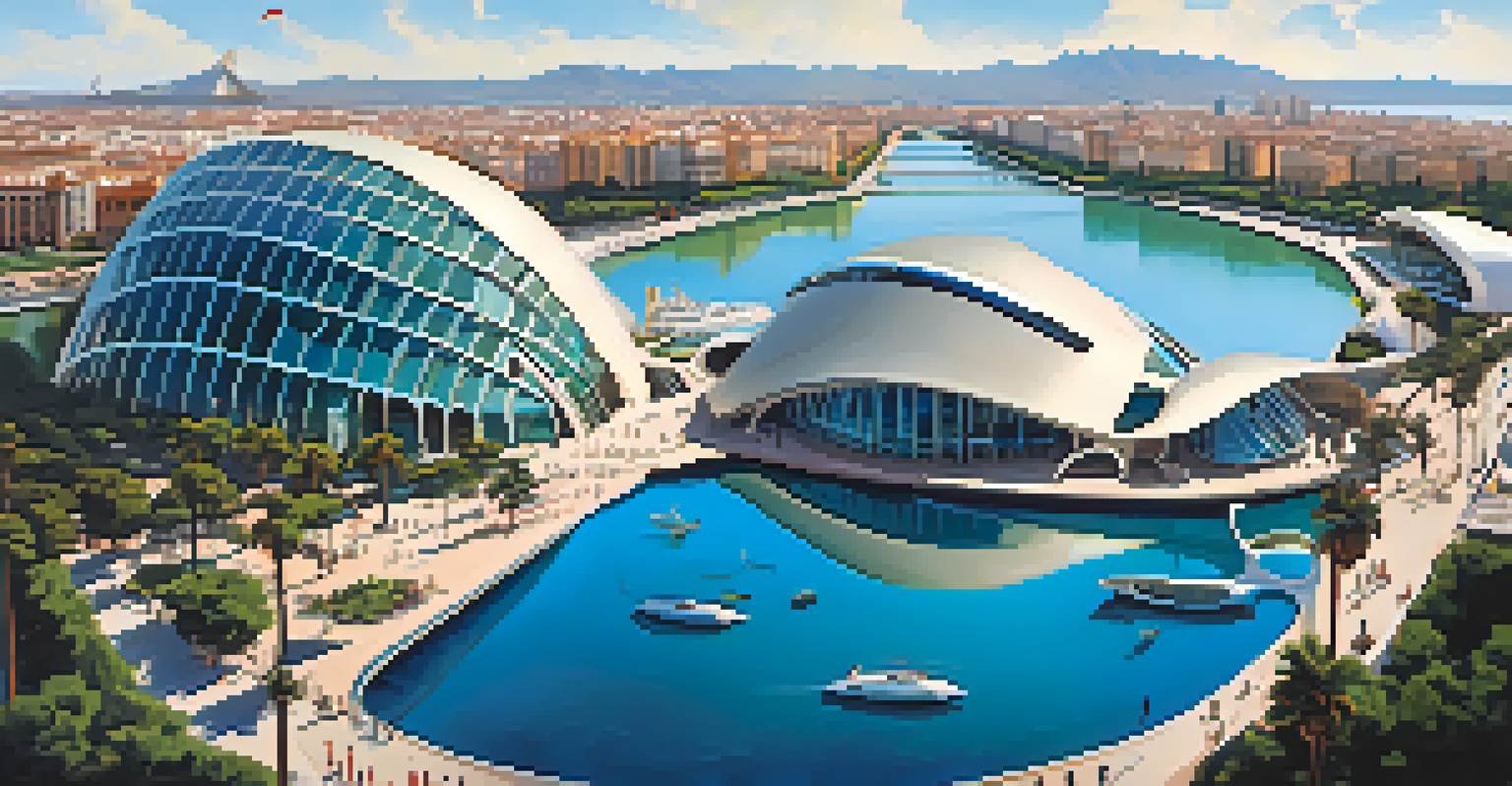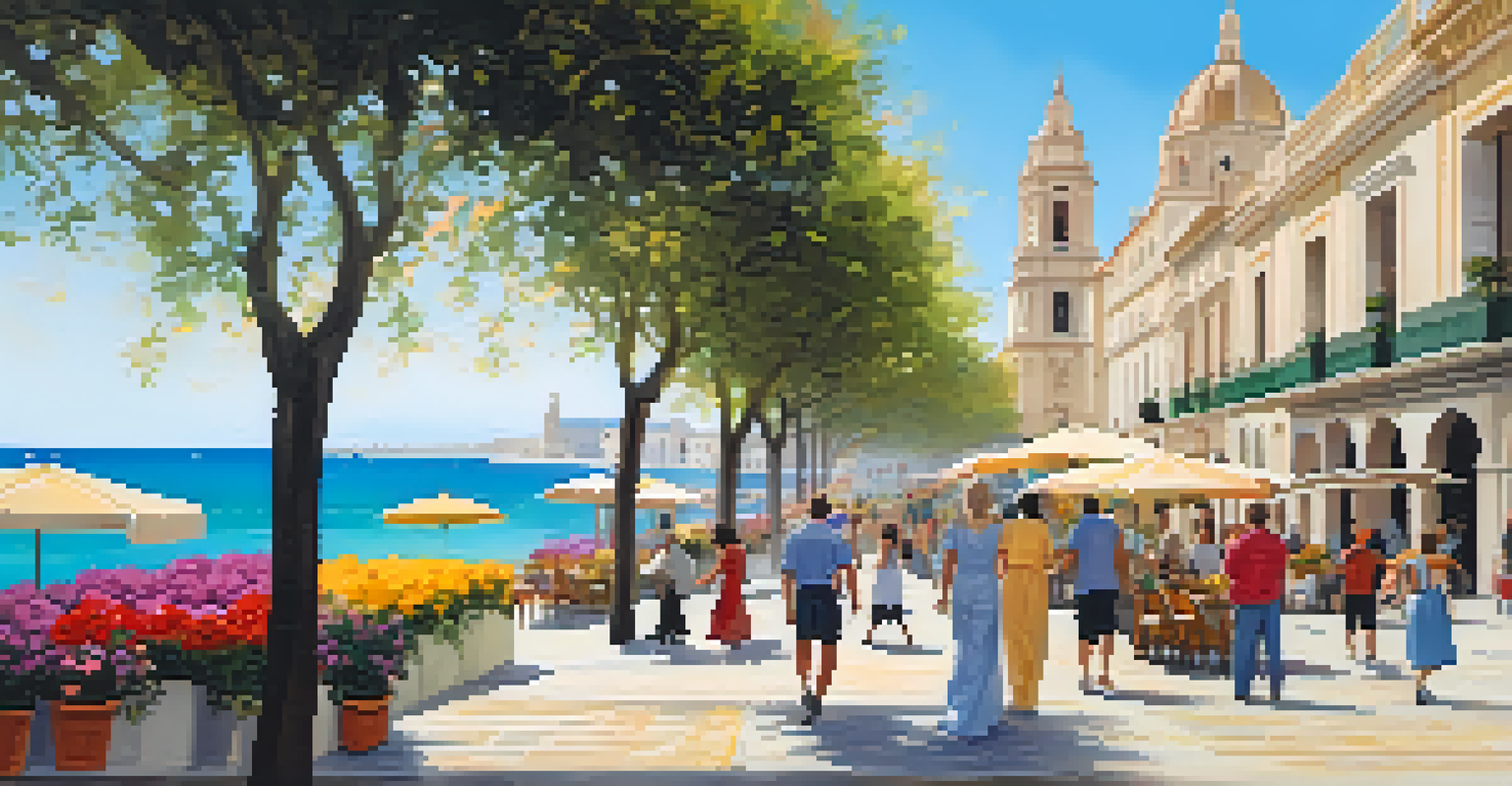Exploring Spain's Historic Maritime Ports: A Cultural Journey

The Significance of Spain's Maritime Heritage
Spain's maritime heritage is a tapestry woven from centuries of exploration, trade, and cultural exchange. From ancient Phoenicians to modern-day sailors, these ports have been gateways to the world. They reflect the country’s evolution and the diverse influences that shaped its coastal communities.
The sea, once it casts its spell, holds one in its net of wonder forever.
The ocean has always been a lifeline for Spain, connecting it to distant lands and peoples. This connection fostered not only economic growth but also cultural richness, evident in local traditions, gastronomy, and art. Each port tells a unique story, revealing the broader narrative of Spain's historical journey.
As we explore these ports today, we are not just visiting locations; we are stepping into history. Each wave that laps against the shore carries echoes of the past, inviting us to dive deeper into the maritime tales that have defined Spain.
Barcelona: A Blend of Modernity and History
Barcelona, renowned for its stunning architecture and vibrant culture, boasts a port that has witnessed countless historical events. The Port of Barcelona is not just a docking point; it's a bustling hub where modern-day cruises meet the remnants of ancient trade routes. This blend makes it a perfect starting point for our maritime journey.

Strolling along La Barceloneta beach, one can almost hear the whispers of sailors from centuries past. The city’s Gothic Quarter, with its medieval streets, further enhances this feeling, reminding visitors of the rich maritime legacy that underpins its modern charm. Here, the past and present coexist beautifully.
Spain's Ports: Cultural Gateways
Spain's maritime heritage reflects centuries of exploration and trade, shaping the culture and identity of its coastal communities.
Furthermore, the port is home to the Maritime Museum, which showcases Spain’s naval history through fascinating exhibits. This cultural treasure trove invites visitors to explore the evolution of maritime technology and the pivotal role of the sea in shaping Barcelona’s identity.
Valencia: The City of Arts and Sciences
Valencia, with its striking City of Arts and Sciences, also boasts a significant maritime history through its port. Historically, this port was crucial for trade and agriculture, connecting the region to international markets. Today, it serves as a modern gateway that links Valencia to the Mediterranean and beyond.
In every outthrust headland, in every curving bay, in every grain of sand there is the story of the earth.
Visitors can explore the port area, which features a mix of contemporary architecture and historical remnants. The vibrant waterfront is perfect for leisurely walks, offering a glimpse into the bustling life of one of Spain's busiest ports. The blend of history and modernity creates an inviting atmosphere for all.
Valencia’s maritime culture is also celebrated through its festivals, like Las Fallas, which highlight the city's deep-rooted traditions. This connection to the sea is evident in local cuisine, especially the famous paella, which often features fresh seafood sourced directly from the surrounding waters.
Malaga: A Port of Artistic Inspiration
Malaga, nestled along the Costa del Sol, is not only a vital maritime port but also a beacon of art and culture. The port has been a crucial point of entry for various civilizations, influencing the city's artistic landscape. Today, it continues to inspire local artists and visitors alike with its stunning coastal views.
The Alcazaba and Gibralfaro Castle offer panoramic views of the port, reminding visitors of the historical significance of this maritime hub. These sites reflect the blending of Moorish architecture with Spanish culture, showcasing a rich tapestry of influences that have shaped the region over centuries.
Historical Significance of Ports
Each port in Spain, from Barcelona to Cadiz, tells a unique story of its historical importance in trade, navigation, and cultural exchange.
Additionally, Malaga is the birthplace of Pablo Picasso, and the city honors his legacy through museums and art installations. This artistic spirit, combined with the port's historical importance, creates an enriching environment that celebrates both maritime and cultural heritage.
Cadiz: The Oldest Continuously Inhabited Port
Cadiz, renowned as one of the oldest continuously inhabited ports in Europe, offers a deep dive into Spain's maritime past. With its strategic location, it has served as a crucial naval base and trading post for centuries. The city's rich history is palpable as you wander its narrow streets, lined with charming plazas and historic buildings.
The Cathedral of Cadiz, with its stunning baroque architecture, stands proudly by the waterfront, symbolizing the city’s maritime significance. It’s a reminder of the wealth generated by trade and exploration, attracting visitors from around the world who come to admire its beauty.
Moreover, Cadiz hosts vibrant festivals like Carnaval, where the maritime heritage is celebrated through music, dance, and colorful parades. This lively atmosphere encapsulates the spirit of the city, showcasing how its rich history continues to influence local culture.
San Sebastián: A Culinary Haven by the Sea
San Sebastián, known for its stunning beaches and culinary excellence, is another gem in Spain's maritime crown. The port has a rich fishing heritage that continues to shape its gastronomy, making it a paradise for food lovers. Here, the sea is not just a backdrop but a fundamental element of the local culture.
The bustling fish market reflects the importance of seafood in the region’s cuisine, particularly in the famous pintxos, small plates that showcase the freshest catches. Visitors can indulge in these culinary delights while enjoying breathtaking views of the port and the bay.
Culinary and Artistic Inspirations
Spain's ports not only preserve maritime history but also inspire local cuisine and the arts, making them vibrant centers of culture.
Additionally, San Sebastián's annual film festival further highlights the city's cultural significance. It attracts filmmakers from around the globe, blending the maritime backdrop with the arts, and creating a unique fusion of tradition and modern creativity.
A Coruña: The Lighthouse of History
A Coruña, home to the iconic Tower of Hercules, is a port that combines historical significance with breathtaking coastal views. This ancient Roman lighthouse, still in use today, symbolizes the city’s maritime heritage and serves as a testament to its long-standing relationship with the sea. It’s a must-visit for anyone exploring the region.
The port area is vibrant, filled with cafés and shops that showcase local crafts and seafood delicacies. Walking along the promenade, visitors can appreciate the blend of history and modern life that defines A Coruña. The lively atmosphere invites exploration and offers a taste of local culture.

Moreover, A Coruña’s maritime history is celebrated in the city's numerous museums, where exhibitions detail the evolution of seafaring and trading practices. This commitment to preserving history ensures that visitors leave with a deeper understanding of the port’s significance in Spain’s maritime narrative.
Conclusion: Embracing Spain's Maritime Legacy
Spain's historic maritime ports are not just destinations; they are vibrant storytellers that encapsulate the nation's rich heritage. Each port offers a unique glimpse into the past, revealing how the sea has shaped the culture, economy, and identity of coastal communities. This journey through maritime history enriches our understanding of Spain as a whole.
As we explore these ports, we gain a deeper appreciation for the interconnectedness of cultures and the enduring legacy of trade and exploration. The stories of sailors, fishermen, and merchants continue to resonate, reminding us of the importance of preserving these maritime traditions.
In embracing this maritime legacy, we celebrate not only the history that has shaped Spain but also the cultures that continue to thrive along its coasts. So, whether you’re a history buff, a foodie, or an art lover, the maritime ports of Spain invite you to embark on a journey filled with discovery and inspiration.